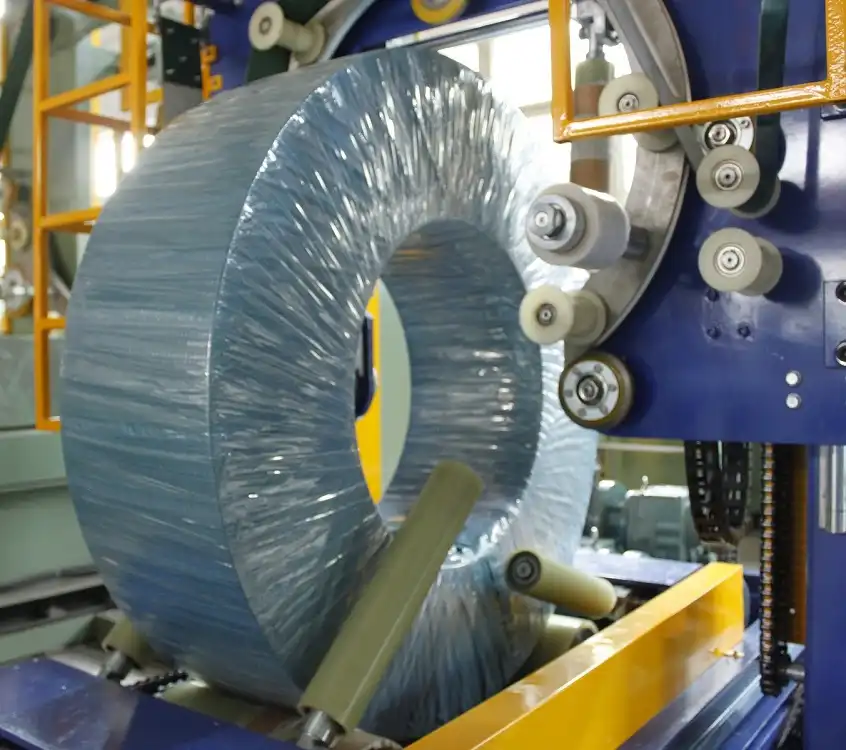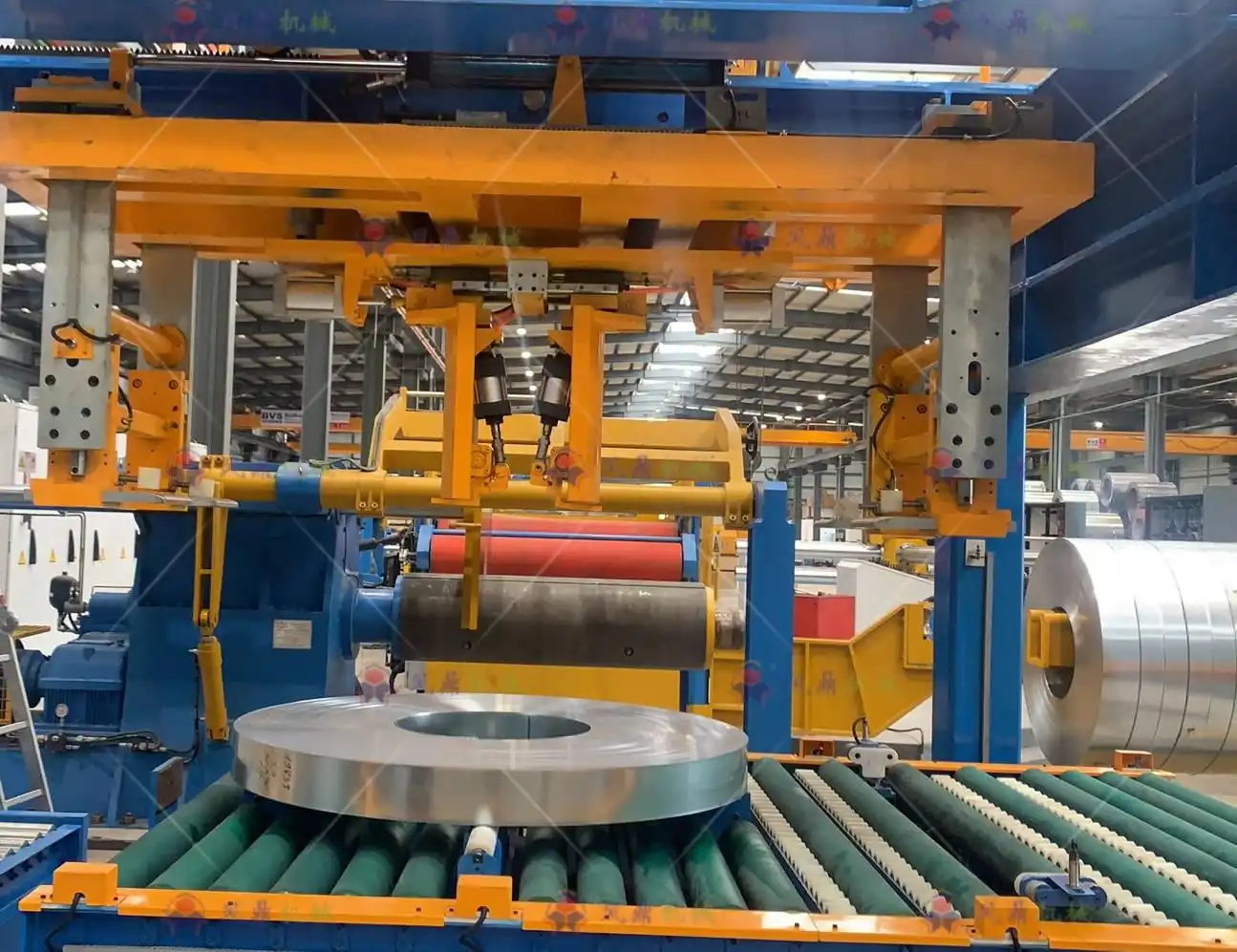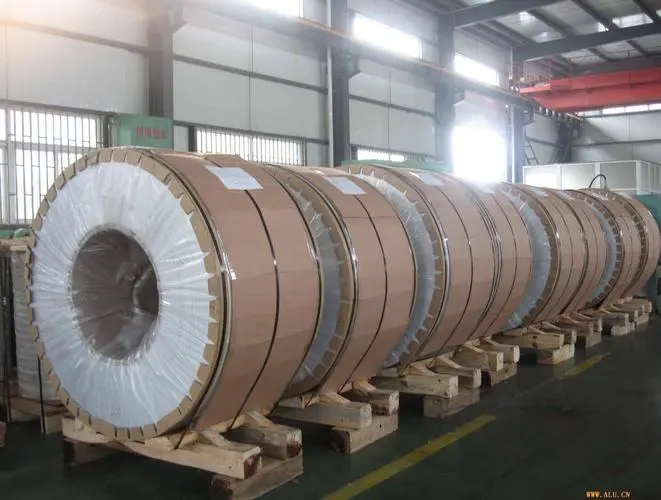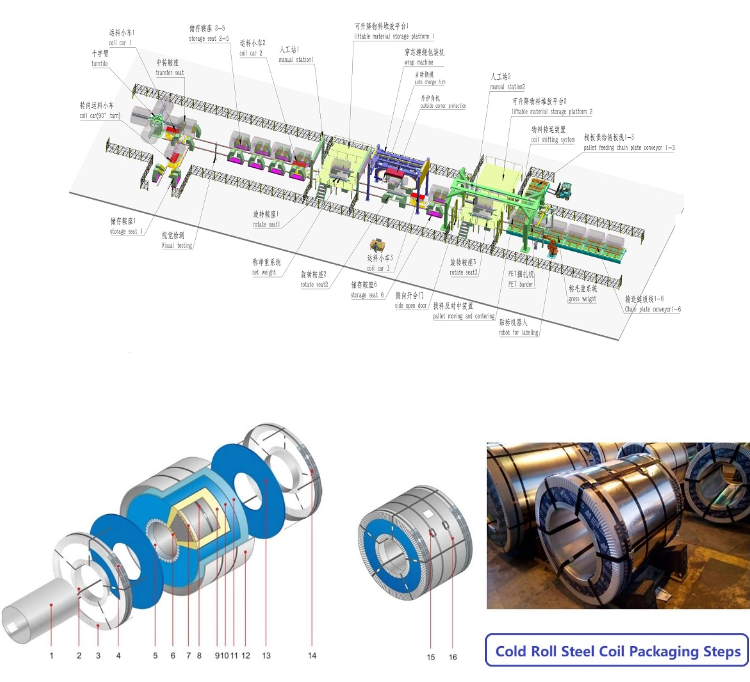Labor Challenges in Steel Coil Packaging and Automation Solutions
In the steel industry, coil packaging is a crucial final step, ensuring steel coils are adequately protected for transport and storage. Due to the substantial weight and dimensions of these coils, packaging traditionally involves significant manual labor for handling, wrapping, and strapping. This reliance on manual processes introduces several labor challenges that impact operational efficiency, worker safety, and overall costs.
As global steel demand rises, so does the need for faster production cycles and higher packaging standards. These pressures highlight the limitations of traditional, labor-intensive methods. Consequently, the industry is increasingly adopting automation solutions to transform steel coil packaging. This article explores the primary labor challenges in this sector and details how automation offers effective solutions, enhancing safety and operational performance.
1. The Physical Demands and Safety Risks of Manual Coil Handling

- Musculoskeletal disorders (MSDs) such as back injuries and muscle strains.
- Joint problems from repetitive motions.
- Risks of crushing or pinching incidents.
These physical demands not only compromise worker well-being, leading to absenteeism and increased medical costs, but also affect operational consistency and speed due to fatigue and the need for frequent breaks. The ongoing labor shortages and an aging workforce further compound these challenges, making it difficult to fill these physically demanding roles.
Solution: Implementing Automated Handling Systems Automating the movement and handling of steel coils drastically reduces manual labor requirements. Key technologies include:
- Robotic arms: Precisely lift, rotate, and position heavy coils.
- Automated Guided Vehicles (AGVs) and Conveyors: Safely transport coils between processing stations.
- Automated Upenders/Down-enders: Reorient coils safely without manual intervention. These systems eliminate the strenuous physical tasks associated with manual handling, significantly improving workplace safety and reducing injury-related downtime. They often incorporate safety features like light curtains, safety scanners, and emergency stops for enhanced protection.
2. Overcoming Packaging Inconsistencies and Human Error
Manual packaging processes are susceptible to human error. Variations in wrapping tension, inconsistent strap placement, or improper application of protective materials can lead to inadequately secured coils. Such inconsistencies compromise the coil's protection during transit, potentially resulting in:
- Product damage.
- Costly returns and claims.
- Customer dissatisfaction.
- Reputational damage.
Achieving uniform packaging quality across numerous coils is challenging manually, especially during high-volume production. This variability can lead to increased material waste and difficulty meeting stringent industry or customer-specific packaging standards.

- Automated coil wrapping machines: Apply stretch film or other materials with consistent tension and overlap.
- Automated strapping systems: Securely fasten straps with uniform tension every time. By standardizing the packaging process and eliminating manual variability, automation enhances the reliability and quality of the final package, reduces material waste, and boosts overall productivity.
3. Reducing Time-Consuming Processes and Improving Efficiency
Manually packaging steel coils involves multiple sequential steps – moving the coil, applying protective layers, wrapping, strapping, labeling, and preparing for shipment. Each step consumes valuable time, potentially slowing down the entire production line and limiting the total number of coils packaged per shift.
In an industry where speed and efficiency are critical competitive factors, these slow manual processes can create significant production bottlenecks. Extended cycle times lead to lower throughput, potentially delaying shipments and impacting revenue, particularly during periods of peak demand.
Solution: Streamlining Operations with High-Speed Automation Automated systems dramatically reduce the time required for each packaging step.
- Integrated conveyor systems: Seamlessly move coils through different packaging stations.
- Automated coil turntables/rotators: Position coils optimally for wrapping or strapping without manual intervention.
- High-speed wrapping and strapping machines: Complete packaging cycles in significantly less time (often seconds instead of minutes). By automating these tasks, manufacturers can substantially decrease overall cycle times, increase throughput, alleviate bottlenecks, and improve on-time delivery performance.

4. Addressing Labor Shortages and Workforce Challenges
The manufacturing sector, including the steel industry, currently faces significant labor shortages. Attracting and retaining workers for physically demanding jobs like coil packaging is increasingly difficult due to demographic shifts (aging workforce) and changing career preferences among younger generations. This scarcity puts pressure on existing staff and can hinder production capacity.
Reliance on a shrinking pool of skilled labor often leads to:
- Increased labor costs (higher wages, overtime).
- Dependence on temporary or less skilled workers, potentially impacting quality and productivity.
- Difficulty scaling operations to meet fluctuating demand.
Solution: Leveraging Automation to Augment the Workforce Automated packaging solutions help mitigate labor shortages by reducing the reliance on manual intervention for repetitive and strenuous tasks.
- Automation allows existing employees to be upskilled for higher-value roles like machine operation, monitoring, and maintenance.
- It ensures continuous operation even with a smaller workforce, maintaining productivity levels.
- Reduces recruitment and training costs associated with high turnover in manual labor positions.
5. Managing High Labor Costs and Enhancing Scalability
Manual packaging operations incur substantial ongoing labor costs, including wages, benefits, overtime, and costs related to workplace injuries. These expenses significantly impact profitability. Furthermore, scaling production capacity by simply adding more manual labor is often inefficient and unsustainable, leading to diminishing returns and complex workforce management.
Manual processes inherently limit scalability. Responding quickly to surges in demand becomes challenging, potentially leading to missed opportunities and strained customer relationships.
Solution: Achieving Cost Efficiency and Flexibility with Automation Investing in automation provides a more cost-effective and scalable approach to steel coil packaging.
- Reduced labor costs: Directly lowers expenses tied to manual packaging tasks.
- Increased production capacity: Automated lines can operate continuously at high speeds, handling larger volumes without proportional increases in labor.
- Enhanced flexibility: Modern automated systems can often be adjusted to handle different coil sizes and packaging requirements with minimal downtime. The long-term Return on Investment (ROI) from automation stems from reduced operational costs, increased throughput, lower waste, and improved safety metrics.
6. Ensuring Consistent Packaging Quality and Product Protection
Maintaining consistent packaging quality is paramount for protecting steel coils from damage (e.g., corrosion, physical impact) during handling, transit, and storage. Manual processes can struggle to achieve the required level of uniformity, particularly across multiple shifts or workers. Variations in wrapping tightness or strap tension can compromise the package's integrity.
Failure to meet quality standards can result in:
- Costly product damage or rework.
- Customer complaints and returns.
- Negative impact on brand reputation.
Solution: Utilizing Automated Systems for Precision and Control Automated packaging equipment delivers unparalleled consistency and precision.
- Programmable logic controllers (PLCs): Ensure machines execute wrapping and strapping parameters identically for every coil.
- Sensor technology: Monitors tension, material usage, and placement for consistent application.
- Automated quality inspection: Vision systems or sensors can be integrated to detect packaging defects in real-time, allowing for immediate correction and ensuring adherence to quality standards before shipment.
7. Optimizing Production Throughput by Reducing Cycle Times
As highlighted earlier, the long cycle times inherent in manual packaging directly limit production throughput. Each minute spent on manual positioning, wrapping, or strapping accumulates, potentially creating bottlenecks that restrict the output of the entire facility.
Slow packaging lines can impede a manufacturer's ability to meet delivery schedules, increase lead times, and negatively affect overall competitiveness.
Solution: Implementing High-Speed, Integrated Automation Automation drastically shortens packaging cycle times, thereby boosting throughput.
- High-speed machinery: Wrapping and strapping systems designed for rapid execution.
- Integrated line design: Optimizing the flow of coils between stations using automated conveyors, turntables, and transfer mechanisms minimizes transition time.
- Automated palletizing/stacking: Quickly prepares packaged coils for shipment or storage. Reducing cycle times allows manufacturers to process significantly more coils per shift, improving overall equipment effectiveness (OEE) and ensuring faster order fulfillment.
8. Leveraging Real-Time Monitoring and Data for Optimization
Manual packaging operations typically lack sophisticated real-time monitoring capabilities. This makes it challenging to track key performance indicators (KPIs) like packaging speed, material consumption rates, equipment uptime, and sources of inefficiency. Without accurate data, optimizing processes and performing timely maintenance becomes difficult.
This lack of data visibility can lead to:
- Unidentified bottlenecks.
- Inefficient use of packaging materials.
- Unexpected equipment downtime due to undetected wear or faults.
Solution: Integrating Smart Automation with Data Analytics Modern automated packaging lines can be equipped with Industrial Internet of Things (IIoT) sensors and connected to monitoring systems.
- Real-time data collection: Tracks parameters like cycle time, material usage, machine status, and error codes.
- Performance dashboards: Provide operators and managers with clear visibility into operational efficiency.
- Predictive maintenance: Analyzing sensor data (e.g., vibration, temperature) can predict potential equipment failures, allowing for proactive maintenance scheduling and minimizing unplanned downtime.
- Process optimization: Data insights enable informed decisions for adjusting machine settings, improving material usage, and streamlining workflows. Integration with Manufacturing Execution Systems (MES) or Enterprise Resource Planning (ERP) systems further enhances plant-wide visibility.

9. Meeting Evolving Customer Expectations with Advanced Automation
Customers in the steel market increasingly demand faster delivery times, verifiable packaging quality, and reliable, on-time shipments. Manufacturers relying heavily on manual packaging may find it challenging to consistently meet these expectations, potentially leading to lost business in a competitive landscape.
Failure to meet these demands can result in:
- Customer dissatisfaction and potential loss of contracts.
- Increased logistical costs due to expedited shipping or handling returns.
- Damage to the company's reputation as a reliable supplier.
Solution: Employing Automation as a Competitive Advantage Automation solutions directly address key customer expectations by enabling:
- Faster order fulfillment: Reduced cycle times and increased throughput lead to shorter lead times.
- Consistent product protection: Standardized, high-quality packaging minimizes the risk of transit damage.
- Enhanced traceability: Automated systems can integrate with tracking systems to provide better visibility into order status and packaging specifics. Advanced automation, potentially including simulation tools like digital twins, allows manufacturers to optimize line design and performance proactively, ensuring efficient, error-free operations that consistently meet or exceed customer requirements.
Conclusion: Embracing Automation for Future Success
The challenges associated with manual labor in steel coil packaging – from physical strain and safety hazards to inconsistencies, inefficiencies, and high costs – are substantial. Traditional methods struggle to keep pace with modern production demands and market expectations.
Fortunately, automation offers robust and effective solutions. By implementing technologies such as robotic handling, automated wrapping and strapping systems, integrated conveyors, and smart data monitoring tools, steel manufacturers can:
- Significantly improve workplace safety.
- Reduce reliance on manual labor and mitigate associated costs.
- Increase packaging speed and overall throughput.
- Ensure consistent, high-quality packaging that protects products effectively.
- Gain valuable data insights for continuous process optimization.
Investing in automation is no longer just an option but a strategic necessity for steel processors aiming to enhance efficiency, maintain competitiveness, and meet the evolving demands of the global market.